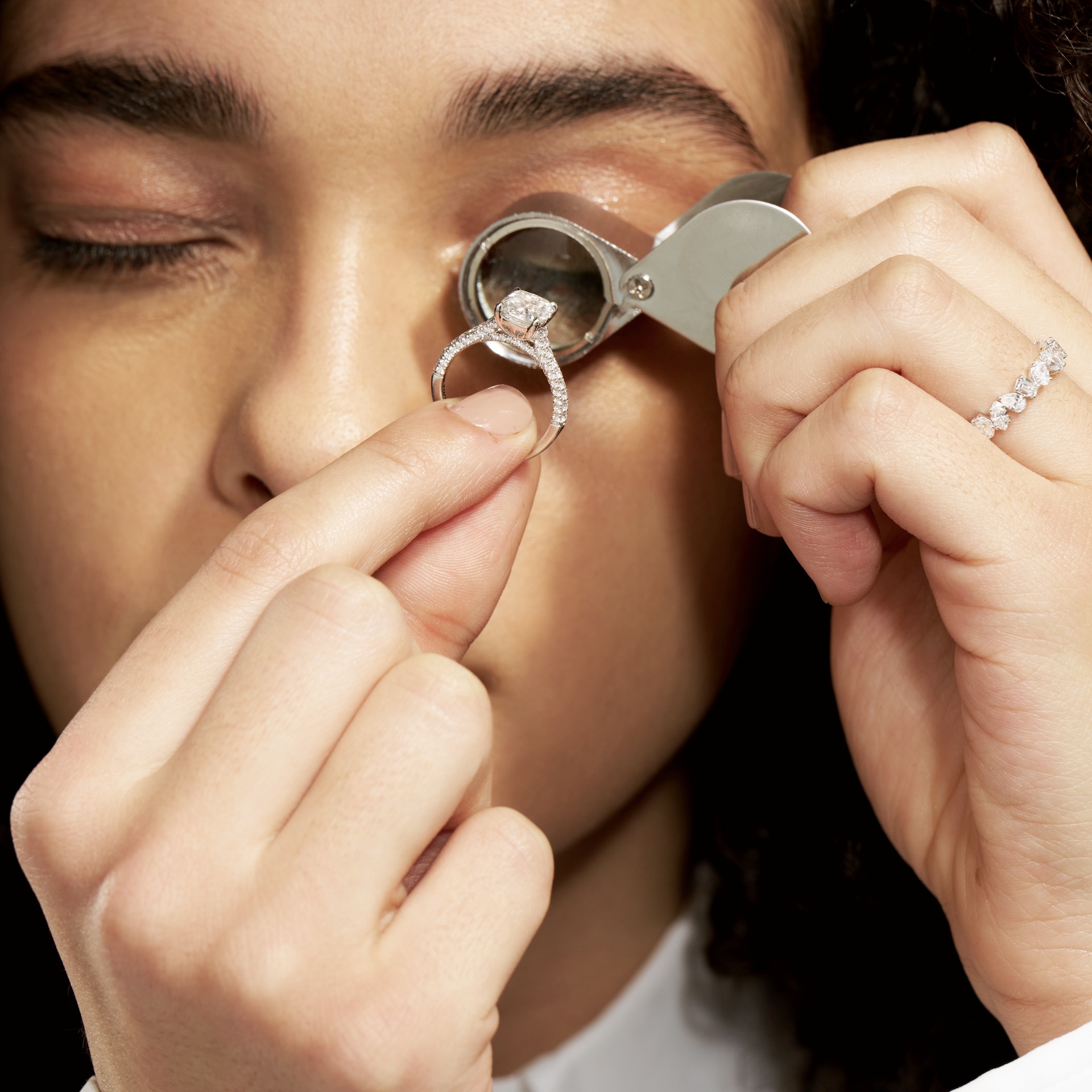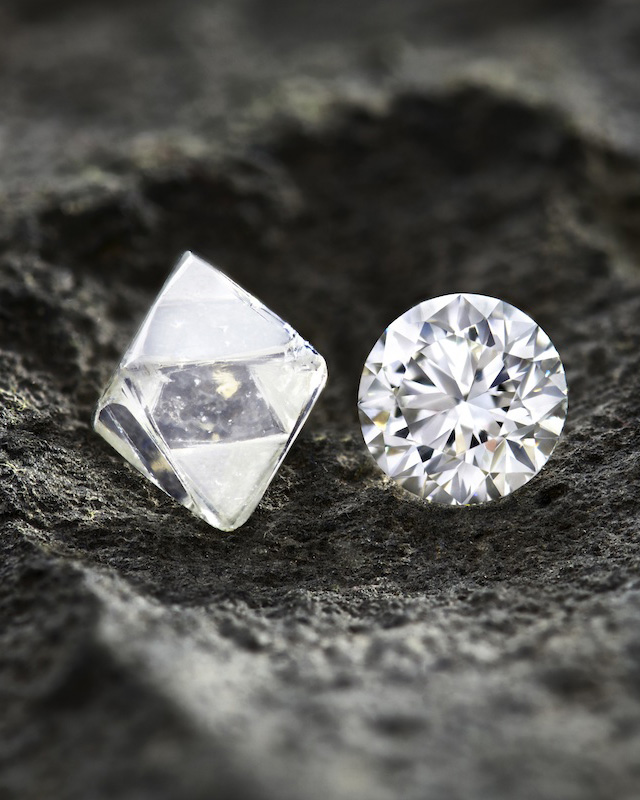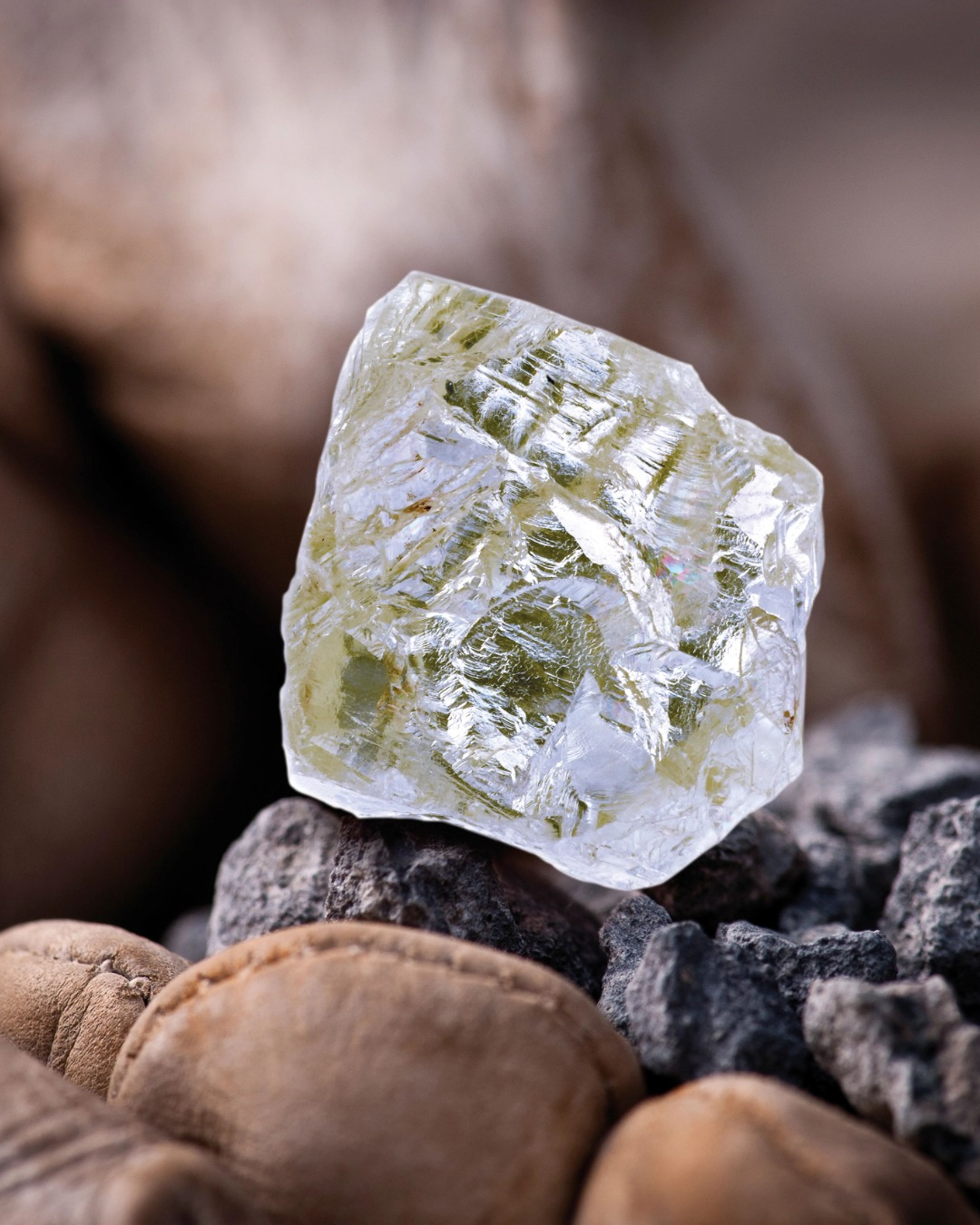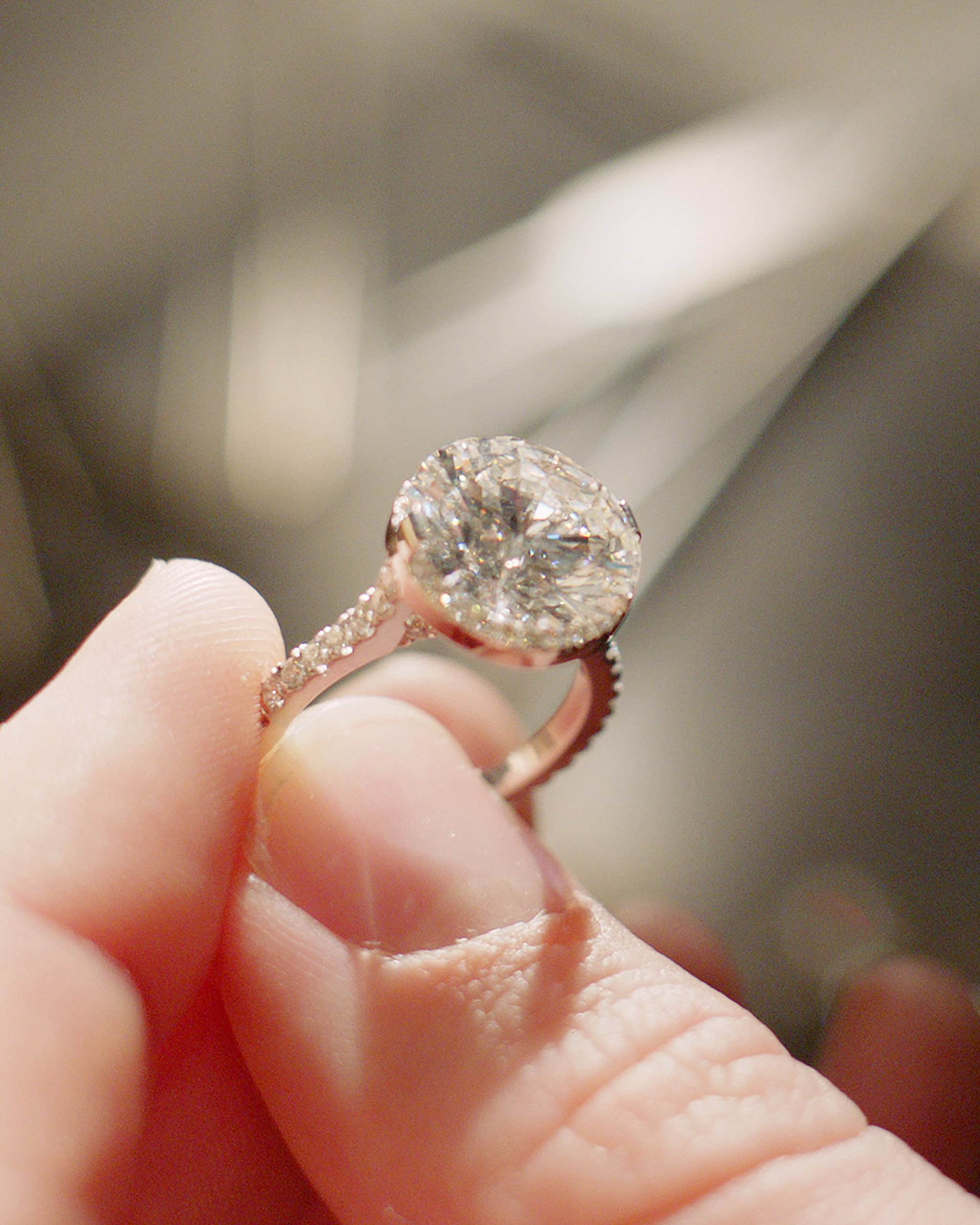A diamond certification (also called a grading report) is more than just a piece of paper—it’s an expert, unbiased evaluation of a diamond’s quality. This grading report verifies characteristics like the 4Cs (cut, color, clarity, and carat weight), ensuring you know exactly what you’re purchasing. Certification provides transparency and confidence, helping you compare diamonds and make an informed decision.
What is Diamond Certification?
Diamond certification is a process in which a reputable gemological laboratory evaluates a diamond based on established standards. These laboratories, like the Gemological Institute of America (GIA), use precise grading systems to assess a diamond’s key characteristics known as the 4Cs—cut, color, clarity, and carat weight. The result is a certification report, often referred to as a grading report, which gives you a detailed description of the diamond’s qualities.
This document helps guarantee that the diamond you are purchasing has been evaluated by experts, ensuring transparency and authenticity. By choosing a certified diamond, you are investing in a gemstone that has been thoroughly assessed according to the industry’s most trusted standards.
Why Is Diamond Certification Important?
Diamond certification is essential because it provides you with the assurance that the diamond you are buying meets specific quality criteria. Without certification, it can be difficult to know the specifics of diamond’s quality as well as whether it is natural or laboratory grown (also known as lab grown or synthetic), as many diamonds may appear similar to the untrained eye. Certification offers peace of mind, especially when it comes to purchasing a valuable and long-term investment like a diamond.
With a certification from a well-known laboratory, you can be confident that the diamond has undergone rigorous testing by experienced gemologists. Additionally, certified diamonds are easier to insure and can be valuable for resale purposes, as they come with a trusted document outlining their key features.


What to Look for in a Diamond Certification
A diamond certification is your key to understanding exactly what you’re buying, providing an expert assessment of a diamond’s quality and characteristics. A reputable certification will break down the 4Cs—cut, color, clarity, and carat weight—along with additional details like shape, dimensions, and any inclusions or blemishes that may affect the diamond’s beauty and value. It will also clarify whether the diamond is natural or lab-grown, ensuring transparency about its origin.
Inclusions and blemishes are natural imperfections that impact a diamond’s clarity. Inclusions, such as tiny air bubbles or mineral crystals, form inside the stone, while blemishes are surface imperfections. A quality certification will indicate the location and severity of these flaws, along with details on symmetry and polish, which reflect how well the facets are aligned and the overall craftsmanship of the stone. Another key factor is fluorescence, which describes how a diamond reacts to UV light, sometimes causing a subtle glow.
To help visualize these details, diamond certificates include a diagram mapping out inclusions and blemishes, giving buyers a clear understanding of the stone’s unique characteristics. This level of transparency and detail ensures you can confidently choose a diamond that meets your expectations.

Are All Diamonds Certified?
No, not all diamonds are sold with certification. While most high-end jewelers offer certified diamonds from reputable labs like GIA or AGS, some diamonds—particularly those from less-established sources—may not come with an official grading report. Certification is more common in luxury jewelry stores, where every stone’s quality and value are carefully verified.
If you want confidence in your diamond’s authenticity and grading, always request a certification. A certified diamond ensures transparency, verifying that your gem meets industry standards for cut, color, clarity, and carat weight. Before making your final purchase, ask for the diamond’s certification to guarantee you’re getting the quality and value you expect.
Diamond Certification vs Diamond Appraisal
While diamond certification assesses a diamond’s quality based on a set of established grading standards, a diamond appraisal serves a different purpose. A diamond appraisal evaluates the diamond’s market value, which may be influenced by factors such as current market trends, conditions, and demand. An appraisal is particularly important for insurance purposes or estate planning, as it provides an estimated value of the diamond in today’s market.
While certification verifies the characteristics of a diamond, such as its clarity and color, an appraisal helps determine how much the diamond would be worth if sold or insured. It’s important to note that both the diamond certification and the appraisal should come from reputable and trustworthy sources. When purchasing a diamond, ensure that the certification and appraisal reports are from recognized institutions and professionals to get the most accurate and reliable information.
Diamond certification is an essential part of buying a diamond, as it guarantees the authenticity and quality of the gemstone. By carefully reviewing a diamond’s certification, you can ensure that the diamond meets the highest standards of cut, color, clarity, and carat weight. Certified diamonds offer transparency and peace of mind, allowing you to make a confident purchase. Whether you’re buying an engagement ring or a piece of fine jewelry, always look for diamonds with certification from trusted laboratories to ensure you’re investing in a valuable and timeless gemstone.









